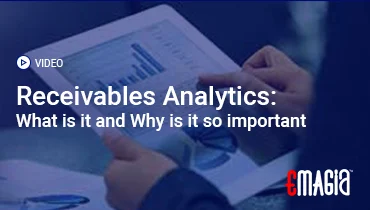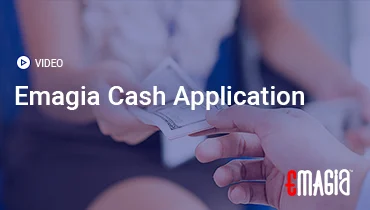In the world of finance, a lot of things change on a day-to-day basis. Transactions happen constantly, money moves in and out, and keeping track of it all can feel a bit like trying to catch sand. This is where bank reconciliation becomes a crucial practice. It’s the essential process of making sure that your company’s financial records—your internal books—perfectly match the bank’s records. It’s not just a task for accountants; it’s the very foundation of financial integrity. When your books and the bank statement align, it gives you confidence, reduces the risk of fraud, and prepares you for audits. This guide will take a deep dive into the concept, exploring it from a new perspective by categorizing the process into three distinct approaches, or “types,” that every business needs to understand.
Understanding the Foundations of Financial Integrity
Before we explore the different approaches, it’s vital to understand the fundamental purpose of bank reconciliation. At its heart, it’s a verification process. Think of it as a quality check for your cash accounts. Every business, no matter how small, maintains a set of financial records, often called a cash book or a general ledger. This is your internal view of all cash inflows and outflows. Separately, your bank provides a statement that shows their record of the same activities. In an ideal world, these two records would be identical at the end of every period. But in reality, they almost never are. Timing delays, errors, and unrecorded transactions create a natural disconnect. The goal of reconciliation is to bridge that gap, identifying the specific reasons for every single difference until both records agree on the true, correct cash balance.
Why Your Internal Records and Bank Statement Never Match
It’s important to accept from the beginning that the balances will almost always differ. This isn’t a sign of a mistake; it’s a natural part of business operations. The primary reason for this is timing. Imagine you write a check and send it to a vendor. You immediately record this transaction in your books, reducing your cash balance. However, the vendor might not deposit that check for several days. During this time, your books show a lower balance, while the bank’s statement still shows the full, unreduced amount. This is a common reconciling item. Similarly, a deposit you make at the end of the business day may not be processed by the bank until the next day, creating a timing difference in the opposite direction. These are the kinds of items that make reconciliation a necessity, not just a suggestion.
Type 1: The Standard Transactional Reconciliation
This is the most common and foundational type of bank reconciliation. It’s the process that every small business owner, bookkeeper, and accountant learns first. It focuses on the granular details of a single bank account and is typically performed at the end of each month. This method is meticulous and often manual, requiring careful attention to detail to ensure every transaction is accounted for. It’s about building financial discipline from the ground up and is a prerequisite for understanding more complex reconciliation scenarios.
The Step-by-Step Process for a Single Bank Account
Performing a standard bank reconciliation follows a clear, logical sequence. It’s a methodical process that, when done correctly, leaves no stone unturned. The process begins with two numbers: the ending balance on your bank statement and the ending balance in your company’s cash book. From there, you work through a checklist of items to adjust both balances until they are in perfect harmony. We’ll outline each of these steps in detail to show you what a comprehensive, manual approach looks like.
Gathering the Necessary Documents for Reconciliation
The first step is a simple one, but it’s critically important. You need to collect all the relevant documents. This includes the bank statement for the period you are reconciling, your company’s internal cash ledger or general ledger, and any other supporting documentation such as check stubs, deposit slips, or credit memos. Having all this information in one place before you begin saves time and prevents you from having to stop and search for missing data halfway through the process. A complete set of records is the only way to ensure a complete and accurate reconciliation.
Identifying the Reconciling Items
Once you have your documents, the real work begins. You’ll compare the transactions listed on your bank statement with the transactions recorded in your cash book. As you match each item, you’ll “check it off” or highlight it. Any items that appear on one record but not the other are your reconciling items. These are the differences that you need to explain and account for. The most common of these include outstanding checks, deposits in transit, bank fees, and interest earned. Understanding each of these items is the key to mastering this type of bank reconciliation.
An outstanding check is a check you have written and recorded in your books, but the recipient has not yet cashed or deposited it at the bank. Since the bank doesn’t know about it yet, their balance is higher than yours. To reconcile, you must subtract this amount from the bank’s balance. A deposit in transit is the opposite. This is cash or a check you’ve received and recorded in your books, but it was deposited too late in the day to show up on the bank statement for that period. You will need to add this amount to the bank’s balance to account for it.
Other items are usually not recorded in your books until the bank statement arrives. These include bank service charges, which reduce your bank balance without your prior knowledge. You must subtract these from your book balance. The same goes for any interest earned on your account; the bank will add it, but you need to add it to your books to match. Other miscellaneous items like non-sufficient funds (NSF) checks, which bounce and are deducted by the bank, also need to be recorded in your internal records. Properly categorizing and adjusting for these items is the core task of this type of reconciliation.
Making the Adjustments and Documenting the Final Statement
After you have identified and listed all of the reconciling items, you perform the final calculations. You start with the bank’s ending balance and make all the necessary additions and subtractions (for deposits in transit, outstanding checks, and bank errors). This gives you the adjusted bank balance. You then do the same for your cash book balance, making adjustments for bank fees, interest, and any book errors. This gives you the adjusted book balance. If you have done everything correctly, these two adjusted balances will be exactly the same. The final step is to prepare a formal reconciliation statement, which shows the initial balances, all the reconciling items, and the final, agreed-upon balance. This documentation is vital for auditing and financial review.
Type 2: The Complex Reconciliation Approach
As a business grows, its financial operations become more intricate. A simple, single bank account reconciliation is no longer sufficient. This is where the second type of reconciliation comes into play. It addresses the challenges that arise when a company operates multiple bank accounts, deals with intercompany transactions, or manages accounts with high volumes of unique and complex items. This approach is less about line-by-line comparison and more about a holistic, strategic view of cash across the entire organization.
Reconciling Multiple Bank Accounts and Cash Accounts
A growing business might have separate operating accounts, payroll accounts, and savings accounts, each with its own bank statement. Reconciling these individually is a logistical challenge, but reconciling them in a coordinated fashion is a strategic necessity. This involves managing multiple reconciliation statements at once and ensuring that transfers between these accounts are correctly recorded on both sides, without creating confusion or errors. For example, a transfer from the operating account to the payroll account must be a debit on one statement and a credit on the other for the exact same amount. A mismatch here could indicate a timing issue or, worse, a fraudulent transaction.
The Intricacies of Intercompany Reconciliation
Perhaps the most complex form of reconciliation is when it involves transactions between different legal entities or subsidiaries under the same parent company. This is known as intercompany reconciliation. Imagine one subsidiary sells goods to another. The selling subsidiary records a receivable, and the buying subsidiary records a payable. At the end of the period, these two records must perfectly match to avoid discrepancies when the parent company consolidates its financial statements. Common issues here include different accounting periods, varying currency exchange rates, and simple data entry errors between the two entities. The challenge is not just to reconcile your books with the bank, but to reconcile your books with the books of another part of your own organization. This requires a strong, centralized process and open communication between finance teams.
Specialized Reconciliation Challenges
Beyond multiple bank accounts, complex reconciliation can involve other financial instruments. Reconciling a credit card statement, for instance, requires matching every transaction against expense reports and receipts. This is particularly challenging for businesses with a large number of employees using corporate cards. Similarly, reconciling a loan account involves matching principal payments and interest charges against a detailed amortization schedule. These specialized forms of reconciliation require a deep understanding of the specific financial instrument and a robust process to track and verify every transaction. This level of detail is what separates a basic reconciliation from a truly comprehensive financial control system.
Type 3: The Modern Reconciliation and Automation
The first two types of bank reconciliation are largely defined by their manual processes and the inherent limitations that come with them. The third type of reconciliation represents a paradigm shift, moving the focus from manual effort to technological solutions. In today’s fast-paced digital world, manual reconciliation is simply not sustainable for businesses with a high volume of transactions. This approach leverages automation, artificial intelligence, and sophisticated software to make the process faster, more accurate, and more strategic.
The Inefficiency of Manual Reconciliation
Before we can appreciate the benefits of automation, we need to understand the drawbacks of the traditional manual process. It is time-consuming, tedious, and highly susceptible to human error. A single keystroke mistake can throw off an entire reconciliation, leading to hours of frustrating detective work. As transaction volumes increase, the time required to perform manual reconciliation grows exponentially, diverting valuable human resources from more strategic activities like financial analysis and planning. This inefficiency not only costs money but also delays the monthly close process, preventing management from getting a clear, timely picture of the company’s financial health.
The Power of Automated Reconciliation Solutions
Automated reconciliation software transforms this tedious process into a streamlined workflow. These systems can connect directly to your bank accounts and your company’s enterprise resource planning (ERP) system or accounting software. Transactions are automatically imported and matched based on predefined rules. For example, the software can instantly match a check number in your books to the same check number that cleared the bank, without a human ever having to look at it. This not only saves an immense amount of time but also virtually eliminates data entry errors.
The Role of AI and Machine Learning
Modern reconciliation isn’t just about automation; it’s about intelligence. The latest software uses artificial intelligence and machine learning to do more than just simple matching. AI can learn from historical data to predict and match complex, hard-to-reconcile items that a simple rule-based system would miss. For example, if a vendor consistently uses a slightly different invoice number on their bank statements, an AI can learn to recognize this pattern and match the transactions correctly. This is particularly useful for reconciling intercompany accounts or transactions with ambiguous descriptions. AI can also analyze transaction patterns to proactively identify potential fraud or errors, providing real-time alerts and strengthening a company’s internal controls.
The end result of this third type of bank reconciliation is a shift from reactive to proactive financial management. Instead of spending days finding and fixing discrepancies at the end of the month, your finance team can monitor a real-time dashboard of your cash position. They can focus their attention only on the “exceptions”—the handful of transactions that the automated system couldn’t match—and spend their time on higher-value tasks. This dramatically accelerates the financial close, provides unparalleled accuracy, and gives the business a strategic advantage by having instant access to accurate financial data.
Elevating Your Financial Operations with Emagia’s Intelligent Automation
Manual and even semi-automated reconciliation can be a significant bottleneck for a business. It can be a source of constant frustration and risk. This is where an advanced solution like Emagia comes in. Emagia doesn’t just automate the bank reconciliation process; it transforms it into a strategic asset. By leveraging intelligent automation and artificial intelligence, Emagia tackles the most complex aspects of cash management, going far beyond a simple bank statement match. It provides a comprehensive solution that addresses the reconciliation challenges we’ve discussed, from the simple transactional level to the most intricate intercompany scenarios, all while dramatically improving accuracy and speed.
Emagia’s AI-powered cash application engine is designed to handle high-volume, complex transactions with ease. It can automatically match payments to open invoices, even when faced with incomplete or inconsistent data. This is particularly beneficial for businesses with diverse payment methods and international customers, where manual reconciliation can become a nightmare of different currencies and payment references. The platform uses machine learning to get smarter with every transaction, learning to identify patterns and reconcile payments that would otherwise require manual intervention. This not only reduces the time spent on reconciliation but also ensures that your accounts receivable are always up-to-date and accurate, providing a clear picture of your cash flow.
Beyond cash application, Emagia provides a centralized platform for managing all reconciliation activities. It can seamlessly integrate with your ERP system, pulling data from multiple sources into a single, cohesive view. This is a game-changer for companies grappling with Type 2 reconciliation challenges, such as intercompany transactions or multiple bank accounts. The platform standardizes data, provides real-time visibility across all entities, and automatically flags discrepancies for immediate resolution. This eliminates the need for endless email chains and spreadsheet comparisons, allowing finance teams to collaborate in a single, transparent environment. With Emagia, the financial close process can be accelerated from days or weeks to just hours, freeing up your team to focus on strategic analysis and growth.
Frequently Asked Questions About Bank Reconciliation
What is the main purpose of bank reconciliation?
The main purpose is to verify that the cash balance in a company’s internal records (the cash book or general ledger) is in agreement with the balance shown on the bank’s statement. This process helps identify and correct errors, detect fraud, and ensure the accuracy of financial statements. It’s a fundamental internal control practice.
What are the common reconciling items?
Common reconciling items are the differences that cause the bank and book balances to diverge. These include outstanding checks (checks written by the company but not yet cleared by the bank), deposits in transit (deposits recorded by the company but not yet processed by the bank), bank service charges, interest earned, and any bank or book errors.
How often should a company perform a bank reconciliation?
The minimum standard for most businesses is to perform a bank reconciliation once a month. However, companies with high transaction volumes or tight cash flow management may benefit from weekly or even daily reconciliation to catch errors and potential fraud more quickly. Automated systems make continuous reconciliation a viable option.
What happens if my bank and book balances do not match after reconciliation?
If the adjusted bank balance and the adjusted book balance do not match after you have accounted for all reconciling items, it means there is still an unaccounted for discrepancy. You will need to re-examine all of your transactions and calculations to find the error. It’s a critical step that requires you to repeat the process until the balances are in perfect agreement.
What is the difference between bank reconciliation and account reconciliation?
Bank reconciliation is a specific type of account reconciliation that focuses exclusively on the cash account and its corresponding bank statement. Account reconciliation is a broader term that refers to the process of verifying any balance sheet account (such as accounts receivable, accounts payable, or inventory) against its supporting records to ensure accuracy.



